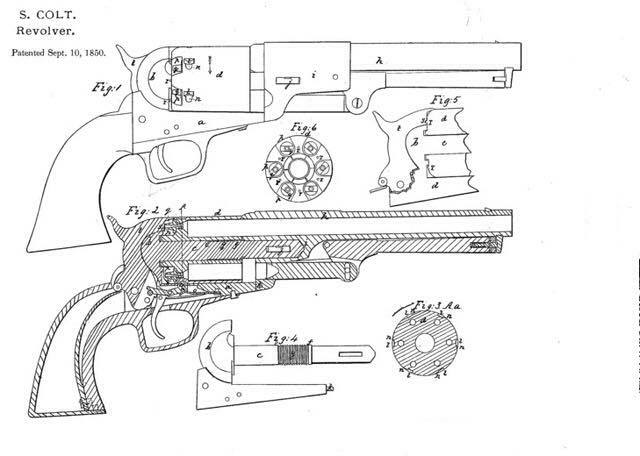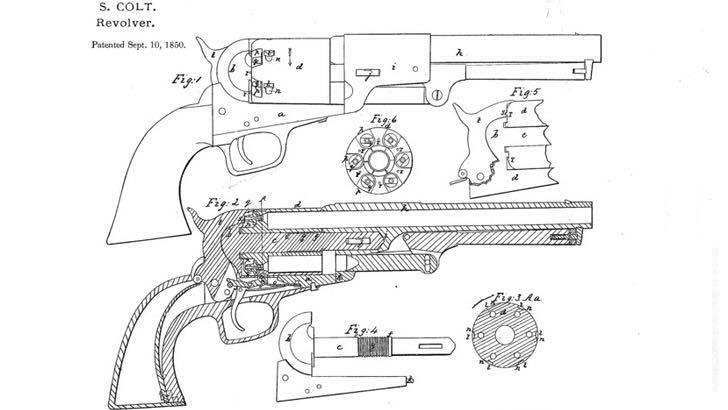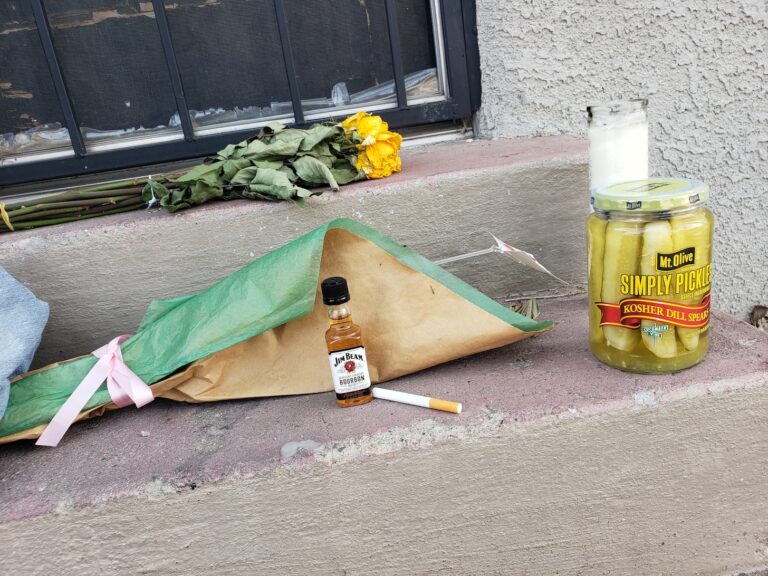At the beginning of the film No Country For Old Men, the sheriff marvels that many of the old-time lawmen didn’t wear a pistol; what he doesn’t mention is that for more than a century, it was illegal for any civilian to do so anywhere in Texas. Yes, Texas. From 1871 until 1995, people were prohibited from openly carrying pistols in public or concealing them on their persons. Texas was special in its statewide pistol ban but hardly unique in the Old West. Many cities such as Tucson demanded that guns be turned in to the local constabulary when entering town. The famous shoot-out at the OK Corral was initiated when the Clantons refused to check their guns. Marshals like Wyatt Earp were paid by the proprietors of brothels, saloons and faro houses that specialized in separating young cowboys from a year’s pay in a matter of minutes. Drunken outraged men shooting up the town was bad for business."Six-gun" revolvers were perfected so that cavalry men could hold the gun in one hand while they rode, but they were surprisingly rare in the Old West. Working men could usually only afford only one gun, and pistols couldn’t also be used for hunting due to their range and accuracy. There was a brisk trade in cheap pocket guns in the East however, such as the infamous Saturday Night Special, but gradually, they were left at home as policing improved.It didn’t hurt that you could be marked as a criminal by police if discovered with a pistol during the course of some other infraction. Many people kept them at home or in their cars but as the 20th century advanced, they didn’t carry them around on their person, both because it was illegal and considered anti-social; pistols were for troublemakers.Pistols have always accounted for the most deaths and gun crimes. Before semi-automatic pistols and rifles, revolvers were the "rapid-fire" weapon of choice: easy to conceal and capable of quickly firing multiple shots. Revolvers were six-shot for a good reason: the short barrel makes pistols inaccurate in combat situations, so the number of shots possible is increased as much as engineering allows. Even now the US Army estimates only a 50/50 chance of hitting a target at 25 feet with a pistol in combat.As with the AR-15, the lethality of pistols was greatly increased with the availability of military style semi-automatic function and the remarkable number of rounds that can be loaded in interchangeable magazines. A PC-designed-and-manufactured Glock 9mm holds 14 rounds—15, if you keep one in the chamber and as many as 21 with an extended magazine like the one used on US Representative Gabby Giffords in Tucson. At the Virginia Tech shooting, 10 to 14 round magazines in 2 pistols were more than enough to kill 32 people and wound 17. A single magazine was enough to murder nine grandparents at church in Charleston, S.C.Accurately, semi-automatic pistols are referred to as "automatics" since they automatically reload after each trigger pull. Plenty of military-style pistols became available in the ’80s with the increased lethality of multiple quick-change magazines accompanying their upsurge in popularity. They sold in the millions, replacing stodgy revolvers.It’s clear that the expectation of people who conceal-carry a semi-automatic pistol is victory in combat at close range, pumping out multiple shots in half-second intervals to ensure a hit. The latest black man shot by police, Stephon Clark, had 20 rounds fired at him, hitting him 8 times in the back. In 2012, 2 policemen engaged a shooter at the Empire State Building, hitting 9 bystanders as well as the assailant with 16 shots.Further, one reaction to the social upheaval of the ’60s was the co-opting of the sportsman-oriented NRA by reactionaries who were convinced the Gun Control Act of 1968 would lead to the eventual outlawing of firearms—right when they needed personal protection, as demonstrated by the civil rights riots of that summer. Many white people no longer trusted government to protect them and such fears were manipulated by security salesmen, most notably, Richard Nixon, and later, the reoriented NRA, which became the de facto gun sales lobby. In articles and advertisements, the NRA propagated the "self-protection" model of gun ownership, promoting the carrying of handguns and urging the passage of concealed-carry laws—even where it involved licensing, something that was usually on their slippery-slope-to-socialism list.Why do some people feel so threatened that they carry a pistol concealed on their person? Through a cursory review of the most complicated subject imaginable, psychology reveals that normal behavior is what most people currently do; individual mental health is measured against an average. The Minnesota Multiphasic Personality Inventory (MMPI) was one of the first instruments for measuring normative behavior; testers were compared to the average score of hundreds of Minnesota students.This method of qualifying normal behavior proved so accurate the Air Force used it to decide who should have control of nuclear weapons, Dr. Strangelove notwithstanding. A handful of personality categories are considered; anxiety, depression and, most importantly, paranoia, among them. Each person scores somewhere along a gradient in each characteristic, considered extreme only if it greatly deviates from the average.It doesn’t take Sigmund Freud to see that if 78% of the population doesn’t keep guns at home for protection, then those who do deviate from the norm. In this case, science says you’re more paranoid and anxious than the average person. Carrying around a hidden gun is undeniably more paranoid yet—far out from the mean, though you’re probably one of the 3% of Americans that own half of all guns in the US.Finally, we have to ask: Are self-appointed but demonstrably anxious and paranoid people packing auto-loading, military-grade pistols a workable solution to safety? In our gun-filled past, Wyatt Earp didn’t think pistols should be part of civilized society; in our gun-overrun present, we should not pretend otherwise.
Winston Spencer is a graduate of the University of New Mexico and served as a First Lieutenant in the US Army. The opinions expressed here are solely those of the author.








